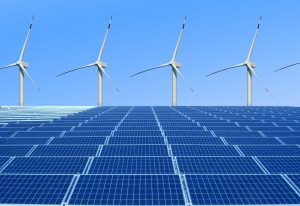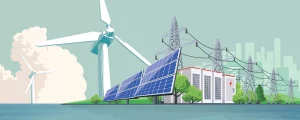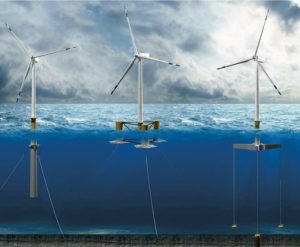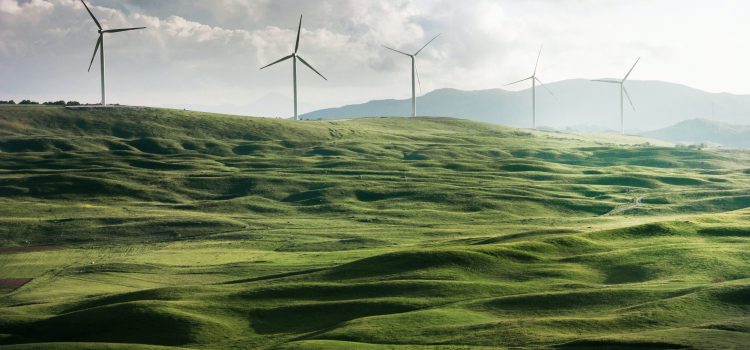
The transition to renewable energy has accelerated at a rate never seen before as the world’s energy needs continue to grow. In order to reduce reliance on finite fossil fuels, mitigate climate change, and create sustainable societies, these energy sources are essential. The main forms of renewable energy are examined below, along with their advantages, practical applications, and case studies that demonstrate their revolutionary potential.
1. Overview of Renewable Energy
Natural resources that are renewed over brief periods of time, such as sunshine, wind, water, and Earth’s heat, are the source of renewable energy. These sources are vital to the fight against climate change since they produce few or no greenhouse gases, in contrast to fossil fuels. A key component of economic growth is the switch to renewable energy, which promotes energy independence and resilience to market fluctuations.
Benefits:
- Environmental: Reduced carbon emissions and air pollution.
- Economic: Lower energy costs and job creation in clean energy sectors.
- Social: Improved energy access for remote and underserved communities.
2. Solar Energy

Solar energy captures sunlight to generate electricity or heat through photovoltaic (PV) panels or solar thermal systems. Recent advancements have made solar cells more efficient, cost-effective, and versatile.
Applications:
- Residential: Rooftop panels for homes.
- Commercial: Solar farms supplying electricity to grids.
- Industrial: Powering factories and data centers.
Case Study:
In India, the Kurnool Ultra Mega Solar Park produces over 1,000 MW of electricity, enough to power 8 million homes annually. It has become a model for large-scale solar projects globally.
Benefits:
- Zero fuel costs post-installation.
- Scalable for small homes or large industries.
- Adaptable to various climates and geographies.
3. Wind Energy
Wind energy converts kinetic energy from wind into electricity using turbines. It is one of the fastest-growing energy sources globally, with offshore wind farms becoming increasingly popular due to stronger and more consistent winds.
Applications:
- Powering residential areas through localized turbines.
- Large-scale generation via offshore wind farms.
Case Study:
The Hornsea Project One in the UK is the largest offshore wind farm, generating 1.2 GW of power, equivalent to supplying electricity to over 1 million homes.
Benefits:
- Cost-effective electricity generation.
- Minimal environmental disruption compared to other sources.
- Significant potential in coastal and windy regions.
4. Hydropower

Hydropower uses flowing or stored water to drive turbines and generate electricity. It remains the largest contributor to global renewable electricity, accounting for around 16% of global power generation.
Types:
- Dams: Generate power through controlled water release.
- Run-of-River Systems: Utilize natural river flows without large reservoirs.
- Tidal Power: Harnesses ocean tides for electricity.
Case Study:
China’s Three Gorges Dam, the world’s largest hydropower station, has a capacity of 22.5 GW, supplying electricity to millions while reducing coal dependency.
Benefits:
- Reliable and consistent energy production.
- Dual-purpose infrastructure for water supply and flood control.
- Potential for small-scale, community-based installations.
5. Geothermal Energy
Geothermal energy taps into Earth’s internal heat for electricity and heating. Unlike solar and wind, it provides consistent output, making it a stable energy source.
Applications:
- Heating greenhouses and industrial facilities.
- Power generation through geothermal plants.
Case Study:
Iceland generates 90% of its heating and hot water needs from geothermal energy. Its Hellisheiði Power Plant produces over 300 MW, showcasing the scalability of this energy source.
Benefits:
- Minimal land footprint.
- Reliable energy generation regardless of weather.
- Long-term sustainability with proper resource management.
6. Biomass Energy
Biomass energy derives from organic materials such as plants, agricultural residues, and animal waste. It produces electricity, heat, and biofuels like ethanol and biodiesel.
Applications:
- Industrial steam production.
- Biofuels for transportation.
- Heating rural households.
Case Study:
In Brazil, sugarcane bagasse (a byproduct of sugar production) is used extensively for bioethanol production, reducing reliance on fossil fuels.
Benefits:
- Utilizes waste materials, reducing landfill use.
- Provides energy storage capabilities unlike solar or wind.
- Compatible with existing fuel distribution systems.
7. Marine and Ocean Energy

Marine energy includes tidal, wave, and ocean thermal energy, leveraging the vast power of Earth’s oceans.
Applications:
- Coastal energy generation through tidal barrages.
- Wave energy conversion devices for remote island communities.
Case Study:
The MeyGen Project in Scotland is one of the largest tidal power initiatives, producing clean energy for 175,000 homes annually.
Benefits:
- High predictability compared to solar and wind.
- Minimal land use.
- Promising potential for global energy needs.
8. Hydrogen Energy
Hydrogen serves as a clean energy carrier when produced using renewable resources. It has diverse applications, including fuel cells for vehicles and industrial processes.
Case Study:
The HyDeploy Project in the UK blends hydrogen into the natural gas network, reducing emissions without requiring major infrastructure changes.
Benefits:
- High energy density.
- Zero emissions at the point of use.
- Versatility in applications across sectors.
9. Comparative Analysis of Renewable Energy Sources
While each renewable energy source has unique strengths, combining them ensures a resilient energy system. For instance:
- Solar and wind complement each other seasonally.
- Hydropower provides backup during low wind or sunlight.
10. Future Trends and Developments
Emerging Technologies:
- Floating Solar Farms: Maximizing space on reservoirs.
- Advanced Geothermal Systems: Drilling deeper to access untapped heat sources.
- Marine Energy Expansion: Harnessing ocean currents and thermal gradients.
Support and Policy:
Tax credits, subsidies, and research money are some of the ways that governments are encouraging the use of renewable energy. By 2050, for instance, the United States wants to produce 75% of its electricity from renewable sources.
Final Thought
Renewable energy is now essential to sustainable development rather than a sci-fi idea. These technologies are changing the global energy landscape, from Iceland’s geothermal power to India’s solar fields. Renewable energy holds up the possibility of a cleaner, greener, and more just future for everybody with sustained innovation and investment.










